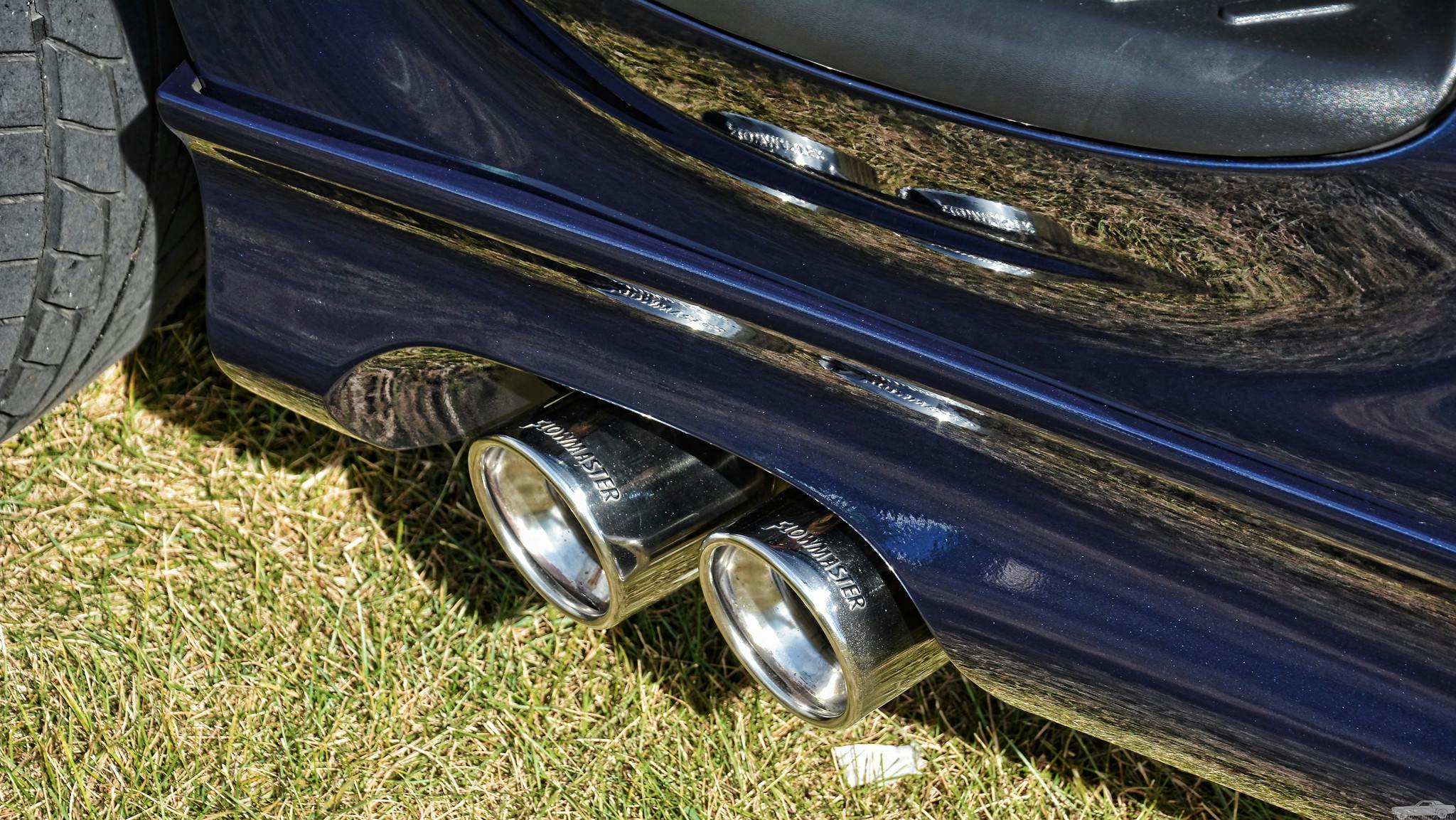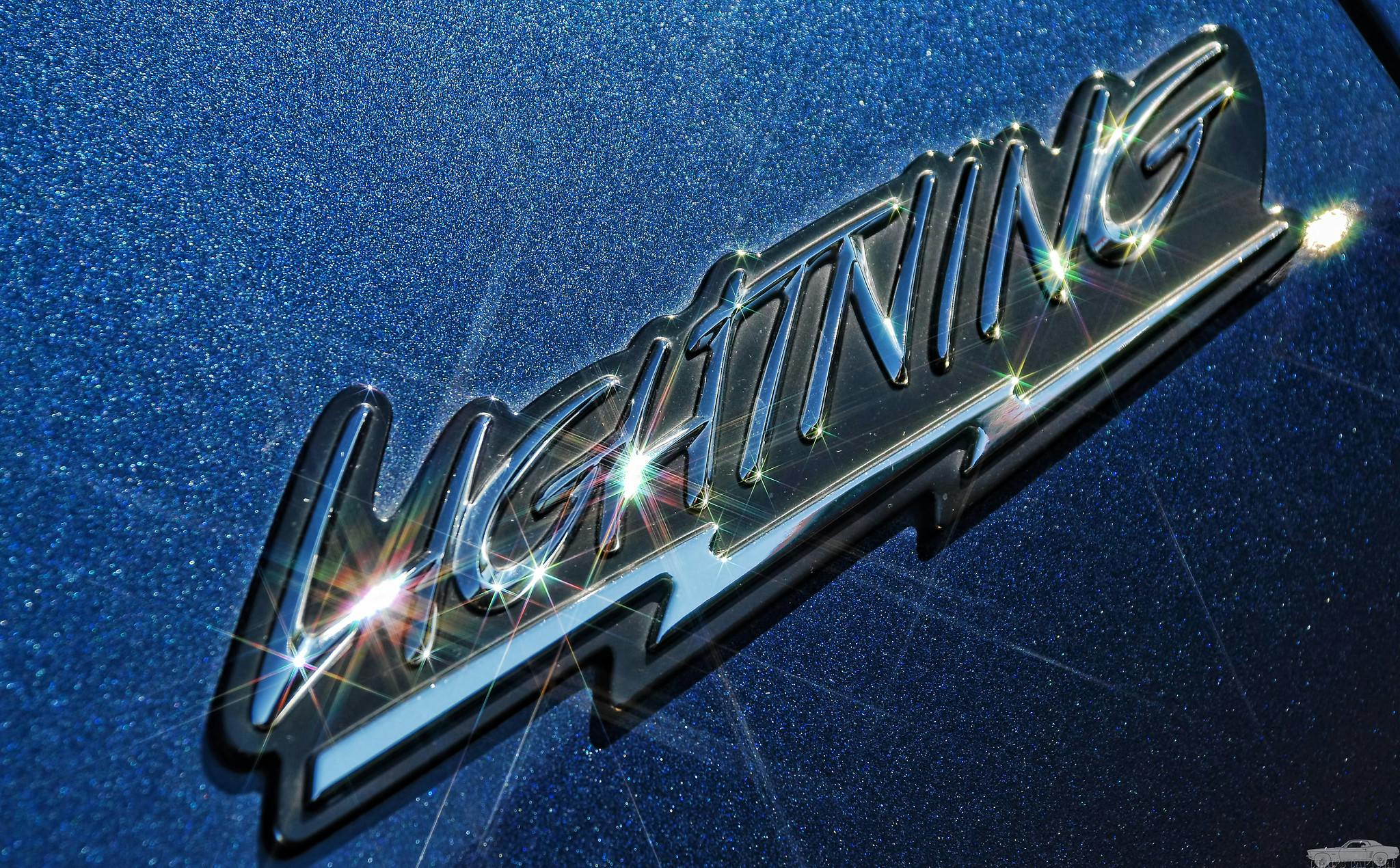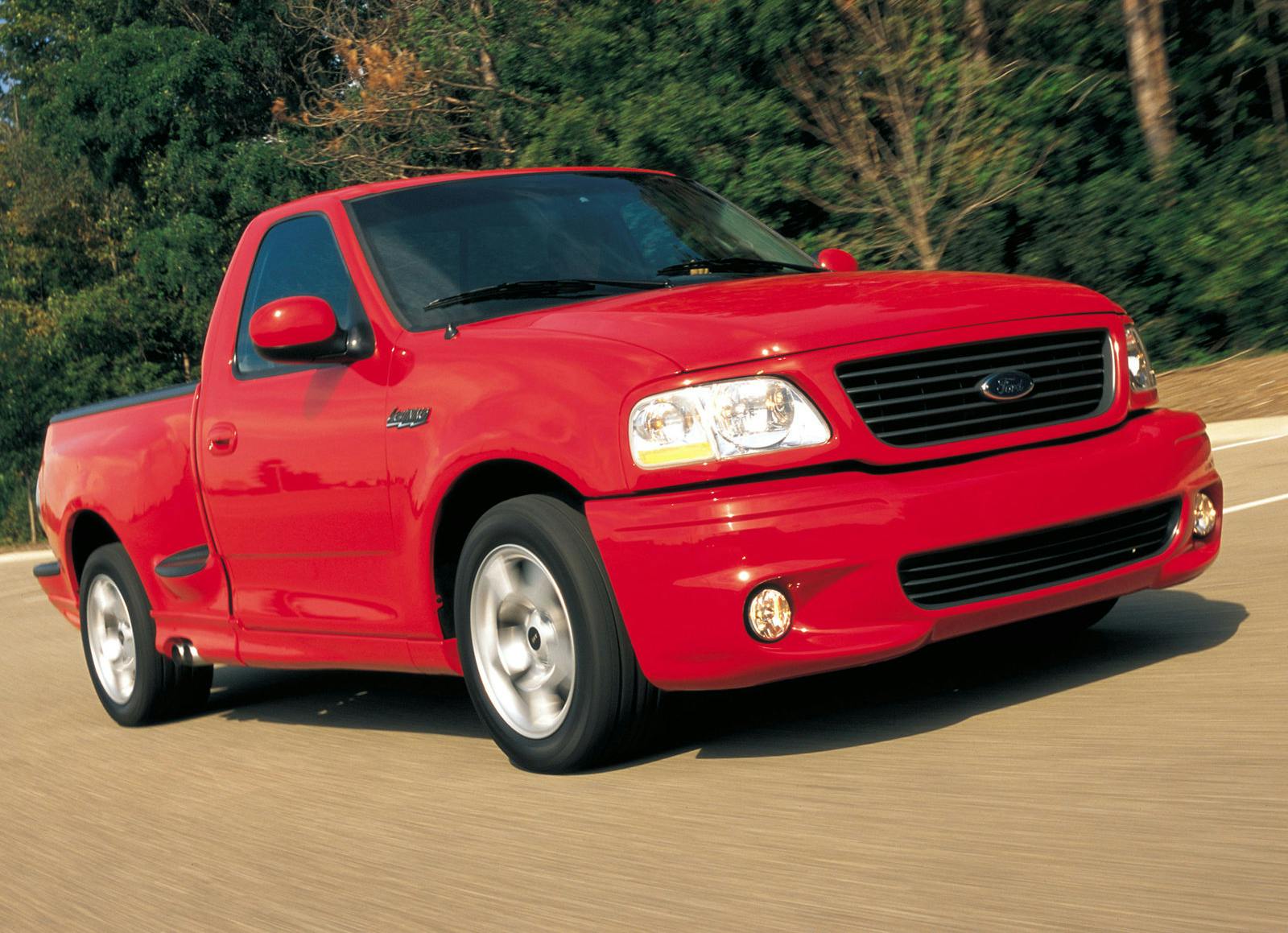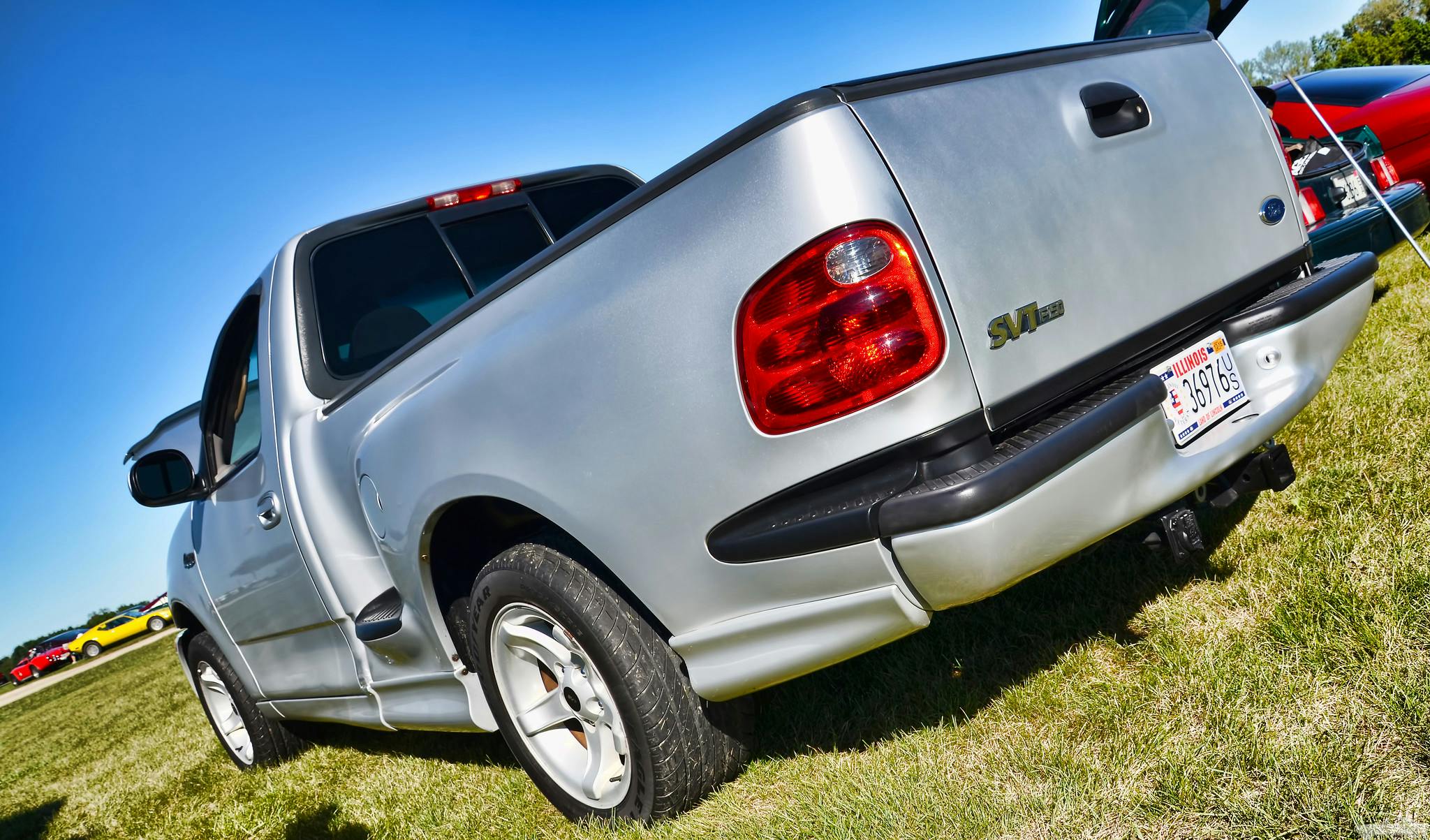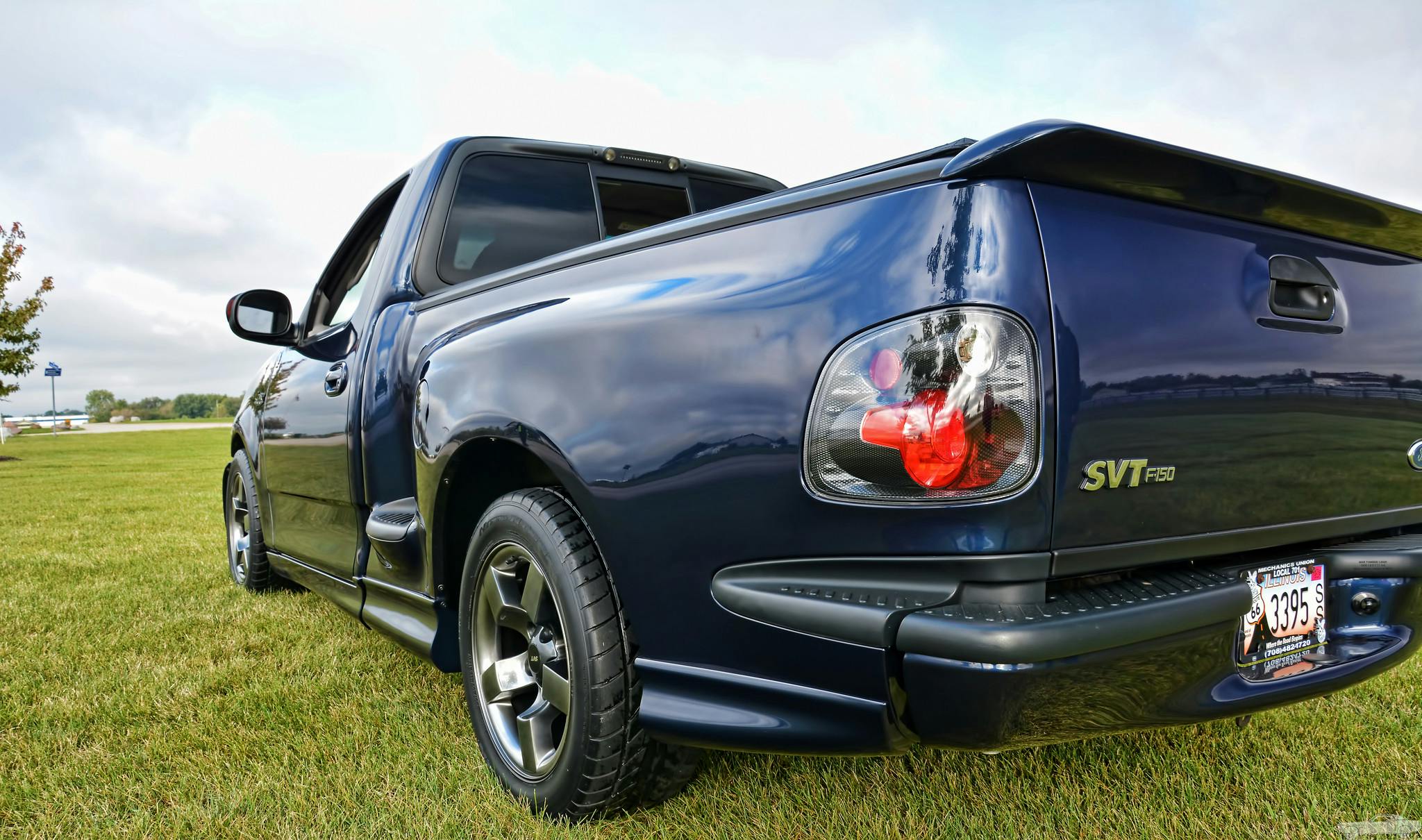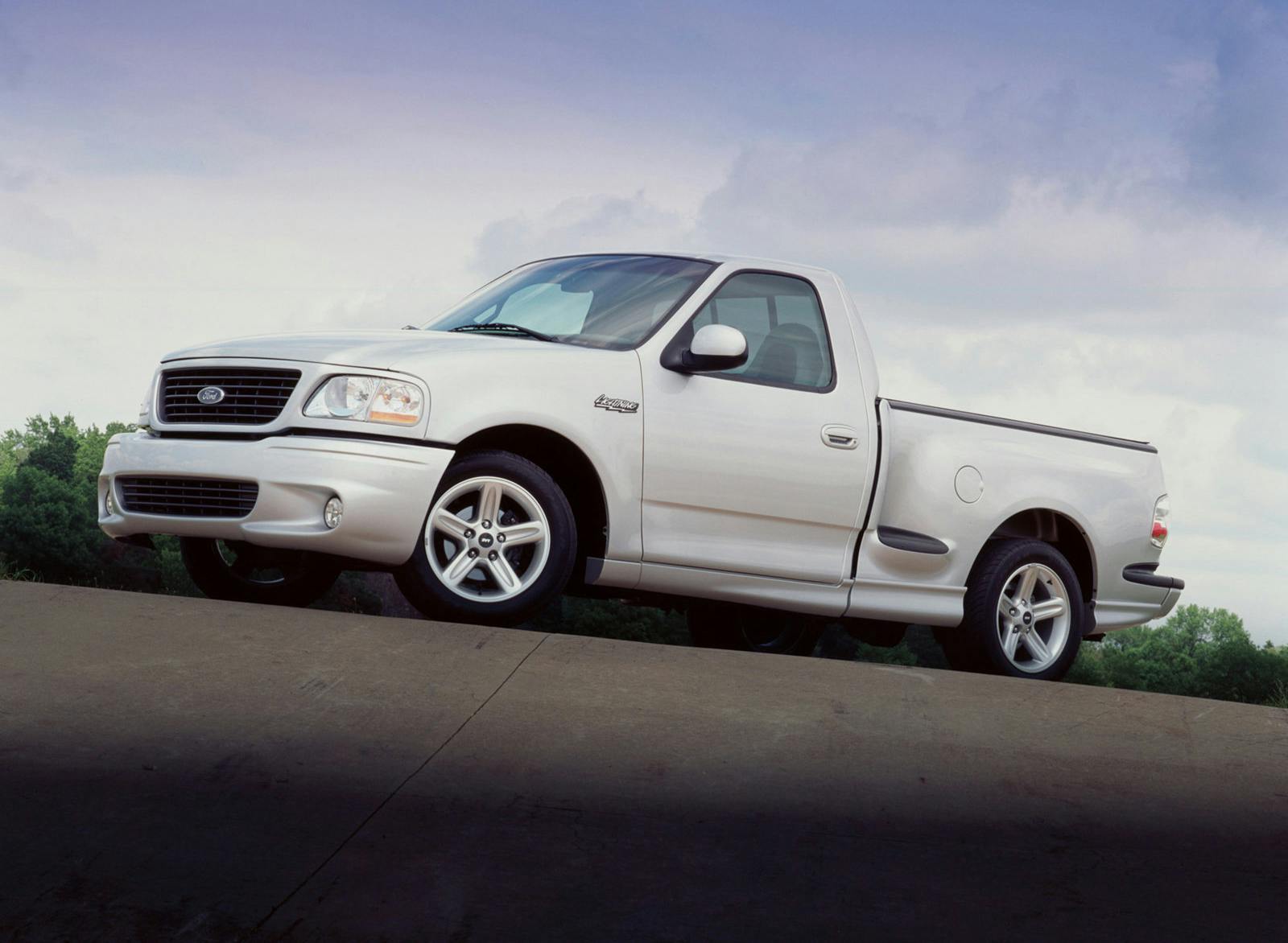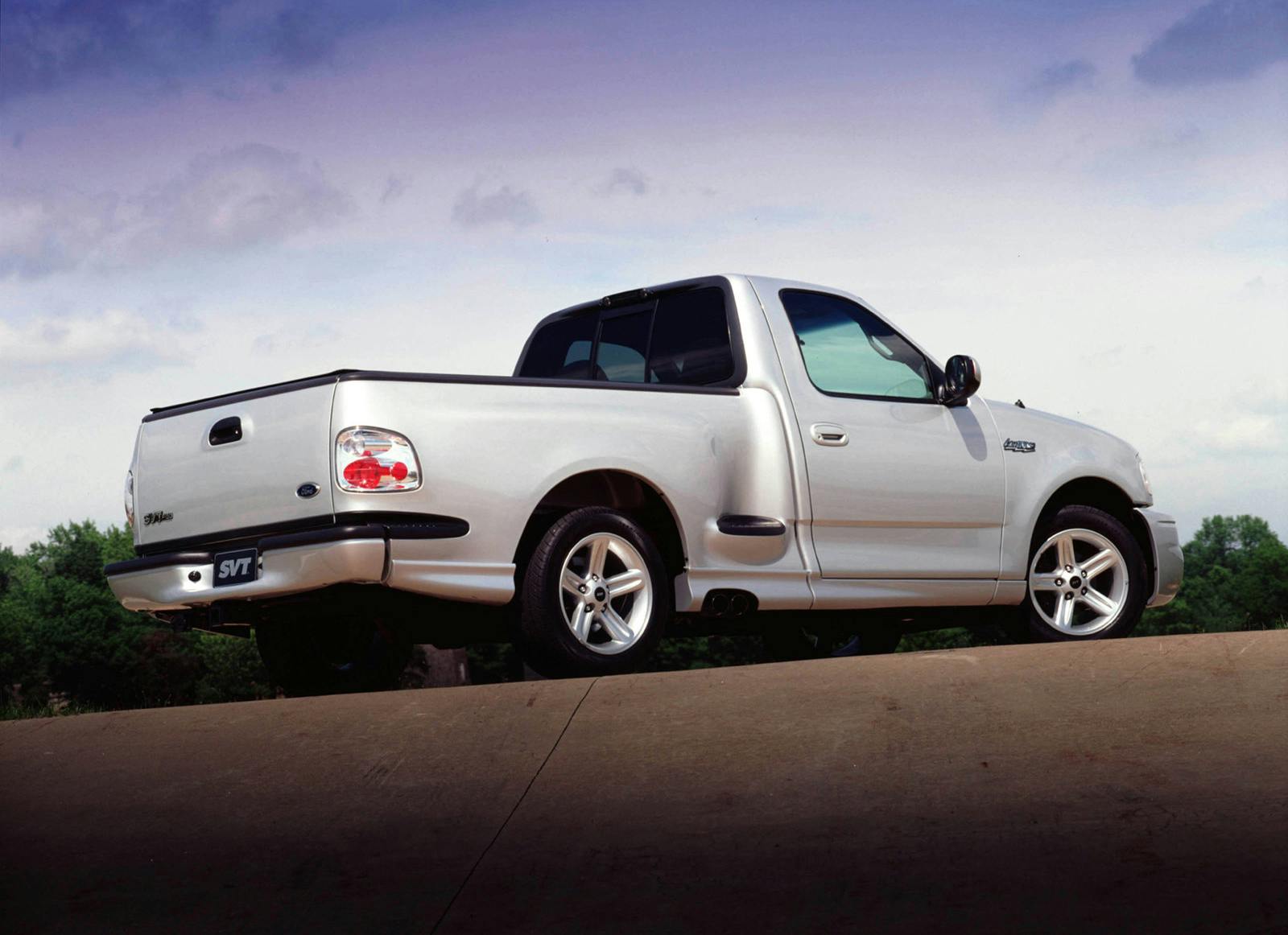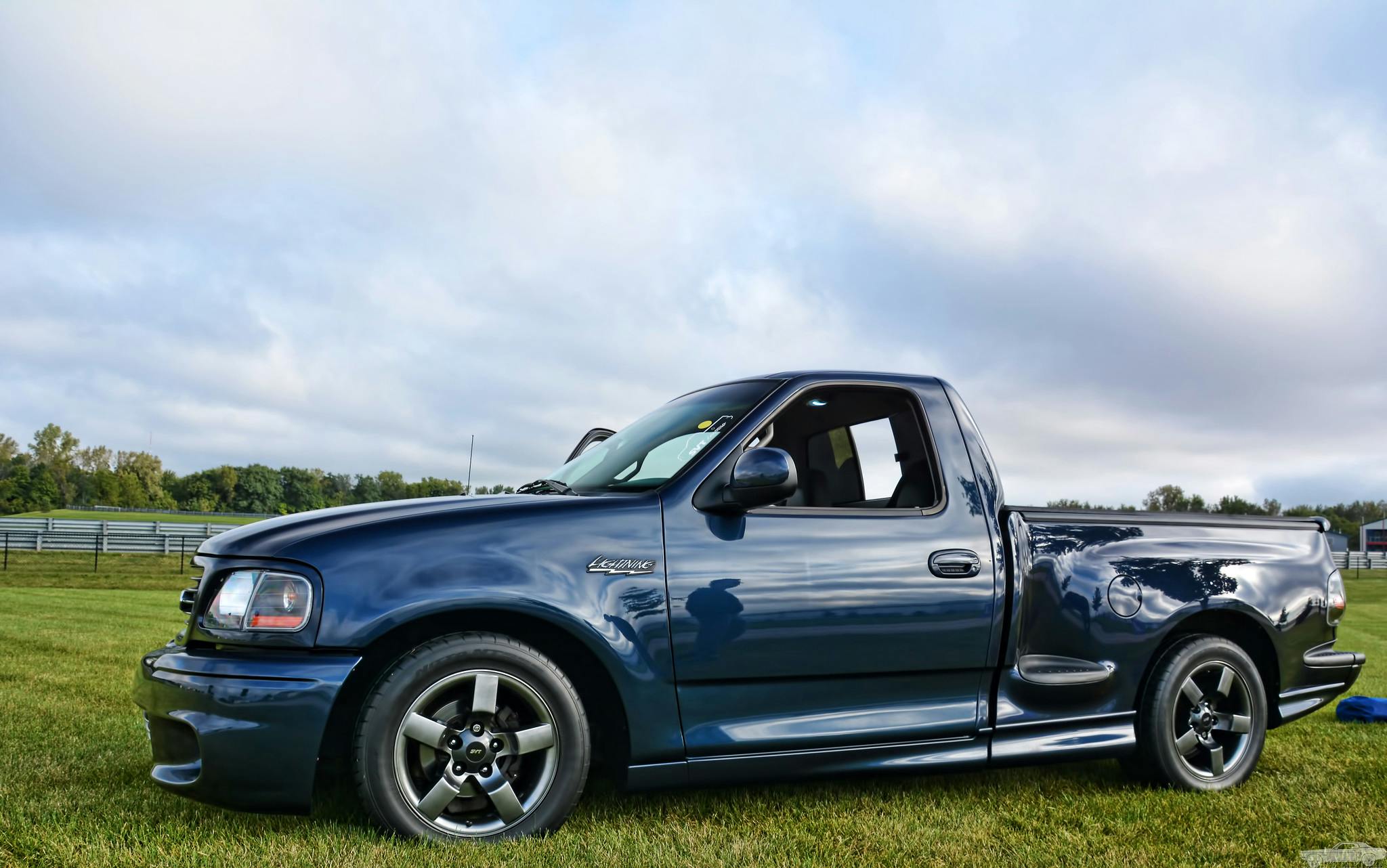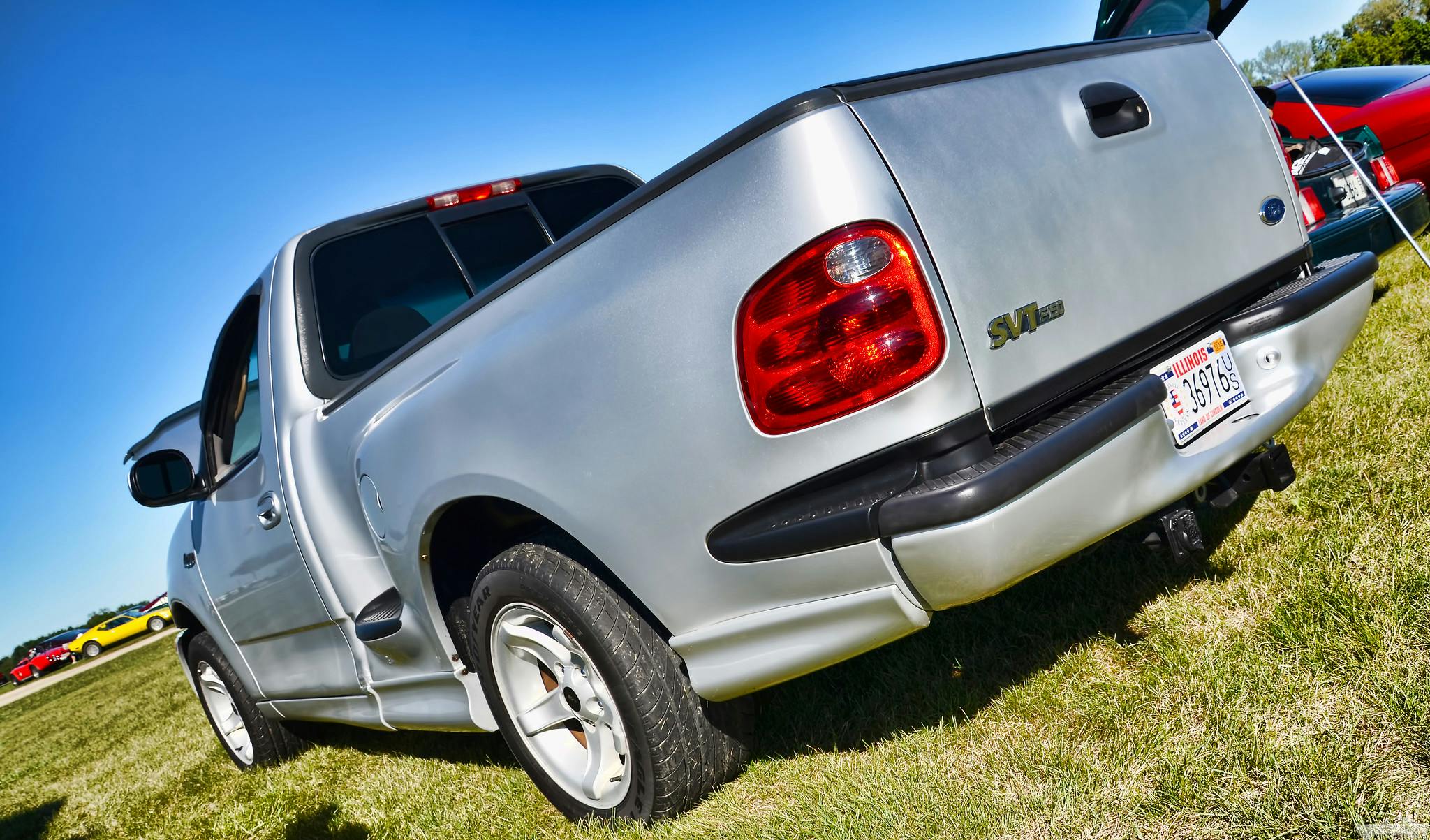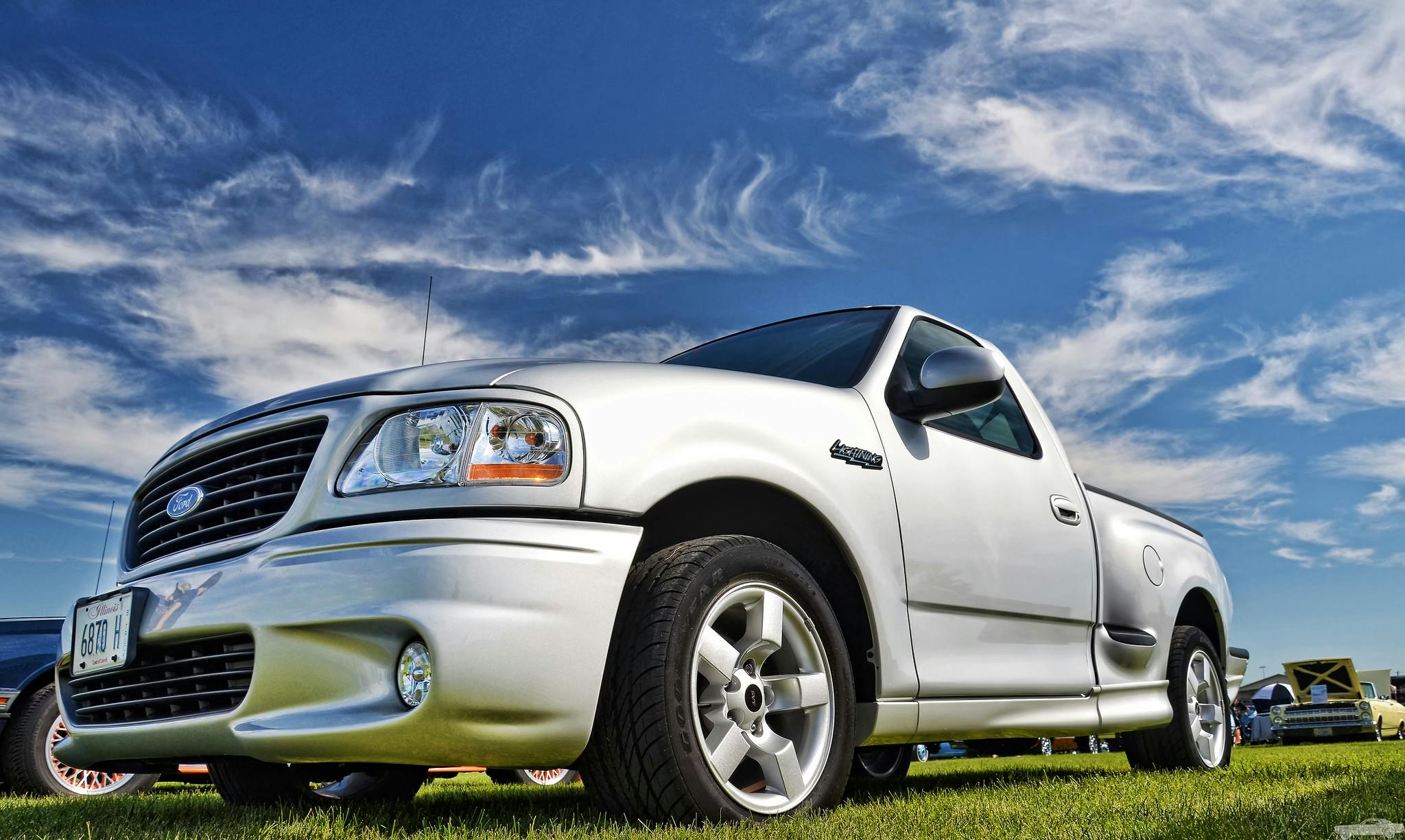Media | Articles
Ford’s second-gen SVT Lightning is emerging as a powerful, capable collector truck
Tire-smoking muscle never goes of style, and if that rubber-shredding ride can also haul wood and tow your boat, all the better. Ford’s hot muscle truck, the SVT F-150 Lightning, is one such multi-talented vehicle. The Blue Oval’s first stab at the Lightning formula has aged remarkably well in the collector vehicle market and remains an affordable classic. However, second-generation SVT Lightning models are coming into their own in the collector car market; prices for top-condition trucks have risen as younger generations of buyers show keen interest.
Despite its all-American persona, the second-generation SVT Lightning was exclusively built in Canada. Ford’s factory in Oakville, Ontario, churned out 28,124 examples between 1999 and 2004, also assembling the truck’s 5.4-liter, supercharged Triton V-8. Though the Lightning’s iron block was cast in the U.S., Ford workers added the aluminum-alloy heads and specially forged pistons in Canada. The SOHC powerplant, blessed with eight pounds of boost courtesy of a Gen IV Eaton supercharger, came paired with a four-speed automatic transmission.
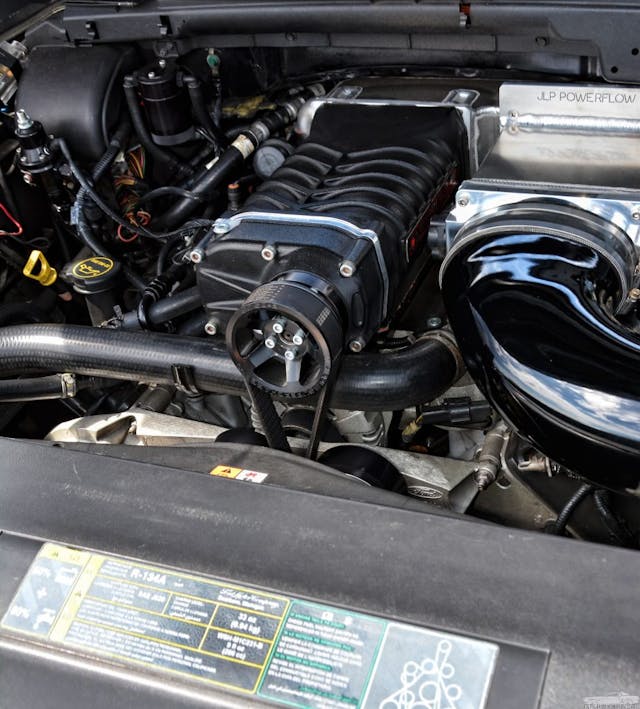
Detroit engineers plucked the 4R100 transmission from Ford’s Super Duty, rated at 1000 lb-ft and originally built to cope with Ford’s 7.3-liter, Power Stroke diesel. In 1999–2000 SVT Lightnings, that beefy four-speed channeled 360 hp and 440 lb-ft of torque to the rear wheels via a 3.55:1 rear end. Not many turn-of-the-millennium pickup trucks could snap off 60-mph sprints in 5.8 seconds—impressive for a 2.3-ton truck that retained its 5000-pound towing capacity. 2001–04 models slashed that 0–60-mph figure to 5.2 seconds thanks to a 10-mm larger mass airflow sensor (80mm to 90mm), a better breathing intake manifold, and a shorter, 3.73:1 final drive ratio. Though these later models boasted 20 extra hp and 10 more lb-ft of torque (380 and 450, respectively), the increased power and performance came with a $1460 uptick in price. Those extra dollars certainly didn’t scare away buyers—Ford sold more 2001 Lightnings (6381) than any other model year. It certainly helped the Lightning’s street cred that, when Car and Driver tested a 2001 model, it banged off a quarter mile in 13.8 seconds at 104 mph. And did we mention the three-inch, side-exit exhaust pipes?
In 2003, the SVT Lightning notched a Guinness-verified top speed of 147 mph, earning it the title of world’s fastest production pickup. Sadly, Dodge’s 500-hp Ram SRT10 would steal the title only a year later with a 154.587-mph run at the hands of NASCAR’s Brendan Gaughan. Produced from 2004–06, the “Viper truck” totaled 9527 examples and also offered a six-speed manual option. Owing to the Mopar truck’s much lower production total (roughly one-third that of the 1999–2004 Lightning), the Ram carries higher average values than the Ford. The Ram SRT10 wins the numbers battle—lots more power, higher top speed, 2500 more pounds of towing capacity—but its bulldog-style jowls and rear spoiler veer dangerously close to garish. The second-gen Lightning is easier on the eyes, riffing on its predecessor’s aesthetic and pairing subtle badging and minimal chrome with a lowered stance and some seriously badass wheels.
Brute speed aside, Ford also touted the Lightning’s “agility and finesse.” The truck received gas-charged shock absorbers at all four corners, with coil springs up front and a leaf-spring setup out back. Ford even staggered the right rear shock towards the front of the truck to limit wheel hop under … enthusiastic acceleration. Current gas prices might convince you to wave off the Lightning’s thirst for fuel, but make sure you add a line item in your budget for its 295-mm, 18-inch Goodyear rubber. Twin-piston calipers bit down on 12.1-inch rotors in the front, with single-piston units and 13.1-inch rotors at work in the rear.
Marketplace
Buy and sell classics with confidence
Ford offered few options on the performance-oriented Lightning. All 1999–2004 models came in single-cab, Sweptside configuration. While the same leather-accented, grey cloth interior endured throughout the Lightning’s entire second-generation, Ford frequently fiddled with the exterior color options. The first year offered only Bright Red, Black, and Oxford White; 2001, 2002, and 2004 added Silver Metallic. Dark Shadow Grey and Sonic Blue appeared for the final two years, and True Blue was a 2002 model year exclusive. 2001–04 trucks also included a six-disc CD player and Class III towing package as standard; on 1999 and 2000 trucks, those were optional. Tweaks for 2001 included a handful of subtle exterior changes, the most obvious being clear taillight lenses and change in grille texture from black honeycomb to thin, horizontal chrome strips.
Ford debuted a 500-hp, third-gen Lightning concept at the 2003 North American International Auto Show in Detroit. Exorbitant development costs, however, choked the planned production version, which never came to fruition. The concept included six-piston Brembo brakes, necessary to counter the 140 extra horses compared to the second-gen model. Under the concept’s hood was a 5.4-liter, DOHC V-8 engine. This Lightning that never was boasted an independent rear suspension and six-speed Tremec manual in addition to a trick, on-demand “Super Cooler” system that used the truck’s air conditioning system to chill coolant to 30 degrees Fahrenheit. (The technology would reach production as the “Power Chiller” in the 2017 Challenger SRT Demon after Ford’s patent expired.)
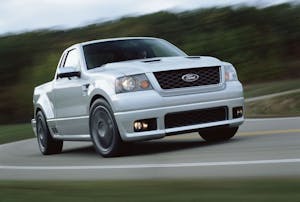
What might it cost to park a second-gen SVT Lightning in your driveway? Expect to spend anywhere between $13,800 for a well-used 1999 or 2000 example with a few bumps and bruises to $37,000 for a concours-worthy model from the last four model years. 2001-and-later trucks, thanks to their marginally higher horsepower figures yet considerably quicker acceleration, command a premium over the 1999 and 2000 examples. For #3- (Good) and #4-condition (Fair) trucks, the difference is $1000 or less; if you’re planning bring your Lightning to a car show, that premium rises to $1300 for a #2-condition (Excellent) 2001–04 model or $6000 for a #1-condition (Concours) example from the same timeframe.
“1999–2004 Lightnings showed up with increasing regularity at collector car auctions in 2019 and early 2020,” says Hagerty Auction Editor Andrew Newton. Several low-mile, extremely clean Lightnings sold for impressive figures within the last year, including an 854-mile, 2004 example last September ($56,100) and this 1800-mile, 2001 example in January ($42,900). These standout sales played a large role in the 19 percent price uptick for #1-condition Lightnings in the May 2020 edition of the Hagerty Price Guide. However, you can easily find #3-condition trucks selling in the teens.
Beating your buddy’s contemporary Mustang SVT Cobra from any given red light is a tempting proposition for under $20,000. The Lightning’s a potent combination of usability and performance that’s hooking a disproportionate number of younger buyers, too—which bodes well for its future in the collector car market. Though Gen Xers comprise 32 percent of the overall market, they account for 36 percent of Hagerty’s insurance quotes for 1999–2004 Lightnings. It’s a similar story with millennials, who make up 21 percent of the collector car market and account for 32 percent of second-gen Lightning quotes.
The 1999–2004 Lightning packs a generous dose of 2000s cool and can pull its weight right along with some turn-of-the-century American sports cars. It offers Detroit muscle flavor in a slightly off-beat package, and at under 20 grand, it can fit into many people’s budgets. Did we mention it can haul some serious … cargo?

